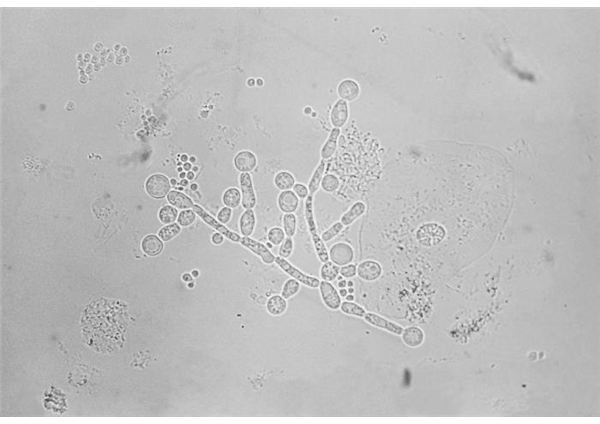
- #Symptoms of yeast overgrowth in intestines professional#
- #Symptoms of yeast overgrowth in intestines series#
But the problem could be yeast triggering more cytokines. This means that too many yeast in a person's intestines can make it look like Lyme is worse. Excess cytokine symptoms give most of the Lyme disease symptoms. Just like white blood cells responding to Lyme make too many cytokines, white blood cells make too many cytokines responding to yeast too. Yeast overgrowth leads to inflammatory cytokine excess. Too many yeast in the intestines lead to a number of problems in Lyme disease. If you are pregnant, nursing, taking medication, or have a medical condition, consult your physician before using any products.Problems from Intestinal Yeast Overgrowth in Lyme Hagmeyer products are not intended to diagnose, treat, cure or prevent any disease. These statements have not been evaluated by the Food and Drug Administration. Hagmeyer encourages you to make your own health care decisions based upon your research and in partnership with a qualified healthcare professional. It is intended as a sharing of knowledge and information from the research and experience of Dr.
#Symptoms of yeast overgrowth in intestines professional#
The information on this website is not intended to replace a one-on-one relationship with a qualified health care professional and is not intended as medical advice. Individual articles are based upon the opinions of the respective author, who retains copyright as marked. The entire contents of this website are based upon the opinions of Dr. Learn more about Testing for Yeast/Candida Fungal overgrowth

These projections can cause intestinal permeability and leak toxins across the cellular membranes. Yeasts can change into an invasive mycellial fungus with rhizoids (tentacle-like projections) that penetrate the lining of the intestinal tract. However, if yeast overgrowth is left unchallenged, more sinister symptoms appear. The body’s immune defenses are usually strong enough to keep the yeast from taking over the intestinal tract. A minor increase in intestinal yeast is usually not a problem, leading possibly to infection of the mouth (thrush) or vaginal lining (vaginitis or “a yeast infection”). Ethanol is alcohol, and there are cases of people who have never drunk a drop of alcohol yet feel as though they are drunk.īirth control pills, food allergies, antibiotics, and corticosteroid therapy are all initiators of yeast overgrowth.
#Symptoms of yeast overgrowth in intestines series#
In turn, yeasts produce a series of chemical products as waste, among which are acetaldehyde and ethanol. Remember, yeast feeds on sugars and on carbohydrates that easily convert to sugars. Once a leaky gut has developed, toxins from microorganisms and protein molecules from your food enter the blood stream and create an immune reaction. Yeast can also invade the intestinal wall creating intestinal permeability aka “Leaky gut”. Such antibiotics promote yeast overgrowth and often times, additional symptoms. In an attempt to arrest these infections, doctors might prescribe a broad spectrum antibiotic. Inflammation of the nose, throat, ears, bladder, and intestinal tract, can lead to infections of the sinus, respiratory, ear, bladder and intestinal membranes. (This might explain why most individuals with chronic yeast overgrowth develop food, inhalant, and environmental allergies).Īllergic reactions can manifest in a variety of symptoms: fatigue, brain fog, depression, joint and muscle pain, digestive disorders, headache, rash, and breathing problems. Antigens then trigger complex allergic reactions. This overgrowth leaks toxins into the bloodstream or other tissues, allowing antigens (foreign invaders) to set up residence in various bodily tissues.


Like most opportunistic infections, Candida and other yeasts may increase during times of stress. Like most opportunistic infections, Candida and other yeasts may increase during times of stress! constipation, diarrhea, and irritable bowel syndrome.Signs and Symptoms of Yeast Overgrowth- Do Any of These Sound Familiar? It Might be Yeast? Candidiasis commonly infects the ears, nose, and urinary and intestinal tracts. This can lead to skepticism in many doctors the symptoms are tough to define. Yeast overgrowth is similar to food allergies in that there are a plethora of associated symptoms. However, if Candida becomes overgrown, which can happen secondary to antibiotic use, a high-sugar diet, or other irritants in the gut such as food allergens or intestinal parasites, problems can arise. Candida is a yeast that occurs in our large intestine – it is supposed to be there, and serves a good function as part of our natural microbiome. Candida overgrowth is a very common problem, leading to symptoms such as gas, bloating, irritable bowel, constipation and/ or diarrhea, lethargy and fatigue, brain fog, neurological issues and many more.


 0 kommentar(er)
0 kommentar(er)
